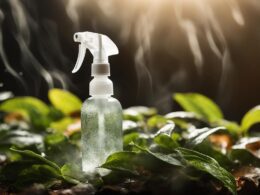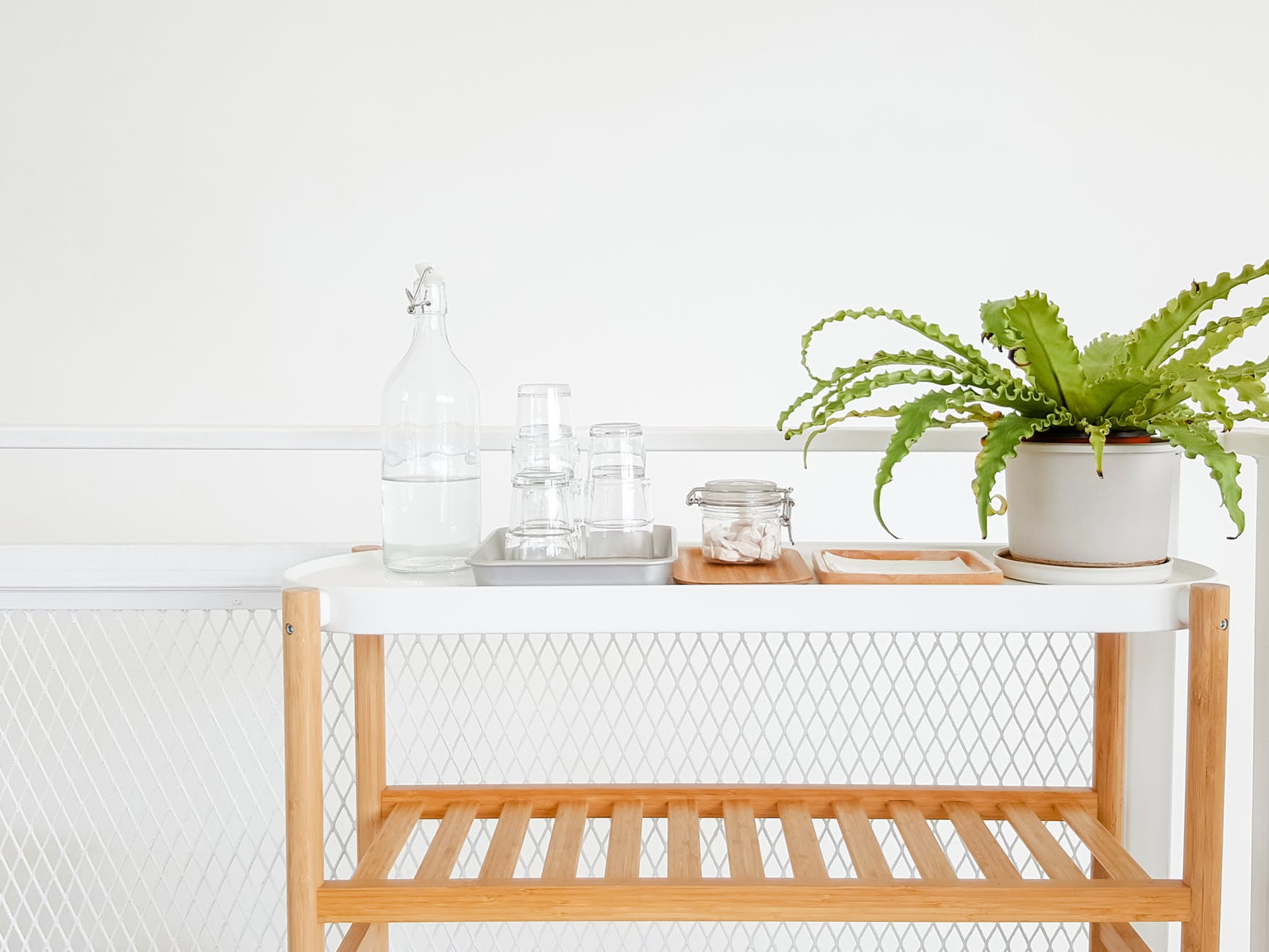Are you unsure about how often to water your creeping jenny plant? Don’t worry, we’ve got you covered!
In this article, we will guide you on the proper watering techniques for your creeping jenny to ensure its health and safety. Creeping jenny, also known as Lysimachia nummularia, is a beautiful and versatile plant that requires regular watering to thrive. By understanding the factors that affect its watering needs, you can establish a watering schedule that suits your plant’s growth stage.
We will also discuss the signs of both underwatering and overwatering, so you can adjust your watering frequency accordingly. Additionally, we will provide you with tips on using mulch to retain moisture and troubleshoot common watering issues.
Get ready to become a pro at watering your creeping jenny and watch it flourish!
Quick Summary
- Creeping jenny’s watering needs depend on weather conditions, soil type, and growth stage.
- Signs of underwatering include wilting, crispy leaves, and yellow or brown leaves.
- Signs of overwatering include yellowing leaves, mushy stems, and a foul odor from the soil.
- Adjusting watering frequency based on the plant’s growth stage is crucial for its health and vitality.
Understanding the Watering Needs of Creeping Jenny
You need to water your creeping jenny regularly to keep it thriving and lush. Understanding the watering needs of this beautiful plant is essential for its overall health.
Creeping jenny, also known as Lysimachia nummularia, is a low-maintenance ground cover that requires moderate watering. It’s important to water it consistently, but not excessively, to maintain its vibrant green foliage.
To determine the watering frequency, it’s crucial to consider various factors such as weather conditions, soil type, and the plant’s stage of growth. As a general rule, creeping jenny should be watered when the top inch of soil feels dry to the touch. However, be cautious not to overwater, as it can lead to root rot and other fungal diseases.
Best practices for watering creeping jenny include providing deep watering sessions rather than light sprinkles. This encourages the plant’s roots to grow deeply and improves its overall resilience. It’s also advisable to water in the morning or late afternoon to minimize evaporation and allow the foliage to dry before the cooler evening temperatures. This reduces the risk of fungal growth.
By following these guidelines and regularly monitoring the moisture levels of your creeping jenny, you can ensure that it remains healthy and vibrant. Remember, a well-watered creeping jenny will reward you with its lush, cascading foliage and add beauty to your garden or landscape.
Factors to Consider When Watering Creeping Jenny
When watering Creeping Jenny, there are several factors you should consider. First, take into account the soil type and drainage. Creeping Jenny prefers moist soil but doesn’t like to sit in water, so make sure the soil is well-draining.
Additionally, consider the weather conditions and seasonal changes, as these can greatly impact the watering needs of Creeping Jenny.
Soil Type and Drainage
For optimal growth, make sure the soil for your creeping jenny has excellent drainage and isn’t overly compacted. The soil composition plays a crucial role in determining how often you should water your plant. Creeping jenny prefers moist soil but not waterlogged conditions.
Sandy or loamy soil with good drainage is ideal as it allows excess water to drain away, preventing root rot. On the other hand, heavy clay soil retains water for longer periods, requiring less frequent watering.
To ensure your creeping jenny’s safety, water it when the top inch of soil feels dry to the touch. This will prevent overwatering, which can lead to root diseases.
Remember, maintaining proper soil type and drainage is key to keeping your creeping jenny healthy and flourishing.
Weather Conditions and Seasonal Changes
Weather conditions and seasonal changes greatly impact the growth and vitality of your creeping jenny. When it comes to watering your creeping jenny, it’s important to consider the impact of climate and seasonal watering.
During hot and dry weather, your creeping jenny will require more frequent watering to stay healthy and vibrant. In these conditions, it’s crucial to monitor the moisture level of the soil and water accordingly.
However, during cooler months or periods of heavy rainfall, you may need to reduce the frequency of watering to avoid overwatering and root rot. It’s always a good idea to check the weather forecast and adjust your watering schedule accordingly.
Remember, providing the right amount of water based on the weather conditions will help ensure the long-term health and survival of your creeping jenny.
Establishing a Watering Schedule for Creeping Jenny
To keep your creeping jenny healthy, you should water it regularly and consistently. Establishing a watering routine is essential in ensuring the optimal growth and well-being of your plant. Determining the optimal watering frequency depends on various factors such as weather conditions, season, and the specific needs of your creeping jenny.
To help you establish a watering schedule, refer to the table below:
| Weather Conditions | Optimal Watering Frequency |
|---|---|
| Hot and Dry | Every 1-2 days |
| Mild and Moist | Every 3-4 days |
| Rainy and Humid | Every 5-7 days |
| Cold and Frosty | Every 7-10 days |
Keep in mind that these are general guidelines, and you should monitor the moisture level of the soil to determine if your creeping jenny needs watering. It’s important not to overwater as it can lead to root rot and other issues. Always check the soil moisture by sticking your finger about an inch deep into the soil. If it feels dry, it’s time to water.
By following a regular watering schedule and adjusting it based on weather conditions, you can ensure the health and vitality of your creeping jenny. Remember, a well-hydrated plant is a happy plant!
Signs of Underwatering and Overwatering
If you want to ensure the health and safety of your creeping jenny, it’s important to establish a proper watering schedule. In the previous subtopic, we discussed how to create a watering schedule for your creeping jenny. Now, let’s delve into the signs of underwatering and overwatering, so you can avoid any potential harm to your plant.
When it comes to underwatering, there are several symptoms to look out for. The leaves of your creeping jenny may start to wilt and become crispy. They might also turn yellow or brown, indicating a lack of water. Additionally, the plant may begin to shed its leaves, as a survival mechanism to conserve water.
On the other hand, overwatering can also be detrimental to your creeping jenny. Signs of overwatering include yellowing leaves, mushy stems, and a foul odor coming from the soil. Overwatering can lead to root rot, which can be fatal for your plant.
To help you easily remember the signs of underwatering and overwatering, here’s a handy bullet list:
- Wilting and crispy leaves (underwatering)
- Yellow or brown leaves (underwatering)
- Shedding of leaves (underwatering)
- Yellowing leaves, mushy stems, and foul odor (overwatering)
By being aware of these symptoms, you can adjust your watering schedule accordingly and ensure the safety of your creeping jenny.
Proper Techniques for Watering Creeping Jenny
Now, let’s learn the right way to keep your creeping jenny hydrated. Proper watering techniques are crucial for the health and well-being of your plant.
When it comes to watering frequency, it’s important to find the right balance. You don’t want to overwater or underwater your creeping jenny. So, how often should you water it? Well, the watering frequency will depend on various factors such as the climate, soil type, and container size.
Generally, creeping jenny prefers evenly moist soil, so you should aim to water it when the top inch of soil feels dry to the touch. This may require watering once or twice a week during hot, dry weather. It’s important to avoid waterlogged soil, as this can lead to root rot.
When watering, make sure to do it deeply and thoroughly. Water the soil directly, avoiding wetting the leaves as this can promote disease. Additionally, using a watering can with a narrow spout or a drip irrigation system can help deliver water directly to the root zone, preventing water wastage and promoting efficient absorption.
Remember, the key is to provide enough water without drowning your creeping jenny, so always monitor the soil moisture and adjust your watering schedule accordingly.
Is the Watering Frequency for Creeping Jenny the Same as for a Yew Hedge?
When it comes to watering a yew hedge frequently, the watering requirements for a creeping Jenny are slightly different. While a yew hedge thrives with regular watering, creeping Jenny prefers moist soil but can tolerate periods of dryness. Therefore, it is advisable to monitor the soil moisture levels and adjust the watering frequency accordingly for both plants.
Using Mulch to Retain Moisture
By using mulch, you can effectively retain moisture in your plant’s soil, ensuring its health and vitality. Mulch offers several benefits that can help keep your creeping jenny hydrated and thriving.
Firstly, it acts as a protective barrier, shielding the soil from the harsh sun and preventing excessive evaporation. This means that the water you provide to your plant will stay in the soil longer, giving it ample time to be absorbed by the roots.
Additionally, mulch helps to regulate soil temperature, keeping it cooler during hot summer days and warmer during chilly nights. This stability in temperature creates a more favorable environment for your creeping jenny to grow.
When it comes to watering your creeping jenny, using alternative methods can also be beneficial. Instead of relying solely on traditional watering techniques, you can try techniques like bottom watering or using a drip irrigation system.
Bottom watering involves placing your plant in a tray filled with water and allowing it to soak up the moisture from the bottom up. This method ensures that the roots receive a thorough watering without wetting the leaves, which can lead to mold or diseases.
Drip irrigation is another effective way to water your creeping jenny as it delivers water directly to the roots, minimizing water waste and evaporation.
Overall, incorporating mulch into your watering routine and exploring alternative watering methods can help you retain moisture in your creeping jenny’s soil, promoting its health and vitality.
Adjusting Watering Frequency Based on Plant’s Growth Stage
To ensure the health and vitality of your creeping jenny, adjusting the frequency of watering based on its growth stage is crucial. By understanding the different stages of growth, you can provide the right amount of water at the right time, ensuring that your plant thrives.
During the initial growth stage, when your creeping jenny is establishing its roots, it’s important to water it regularly to promote healthy root development. This stage usually lasts for about two to three weeks, and during this time, you should water your plant every two to three days. Be careful not to overwater, as this can lead to root rot and other issues.
As your creeping jenny enters the next phase of growth, which is the vegetative stage, you can reduce the frequency of watering. At this point, the plant is actively growing and producing foliage. Water your creeping jenny every four to five days, ensuring that the soil is moist but not waterlogged.
Once your creeping jenny reaches the flowering stage, the frequency of watering can be further decreased. Water your plant every five to seven days, allowing the soil to dry out slightly between waterings.
Adjusting the watering frequency based on your creeping jenny’s growth stage is essential for its overall health and well-being. By providing the right amount of water at each stage, you can help your plant thrive and enjoy its beautiful foliage.
Troubleshooting Common Watering Issues for Creeping Jenny
Now that you know how to adjust the watering frequency based on your creeping jenny’s growth stage, let’s talk about troubleshooting common watering issues for this plant. It’s important to be aware of these mistakes to ensure the health and safety of your creeping jenny.
One common mistake is overwatering. This can lead to root rot, a serious condition that can cause the plant to wither and die. To prevent this, make sure to check the soil moisture before watering. Stick your finger about an inch into the soil – if it feels damp, hold off on watering.
Another mistake is underwatering. While creeping jenny is a resilient plant, it still needs a consistent supply of water. If you notice the leaves turning yellow or wilting, it may be a sign that your plant is not receiving enough water. In this case, increase the frequency of your watering.
To help you avoid these common watering mistakes and prevent root rot, refer to the table below:
| Common Watering Mistakes | Prevention |
|---|---|
| Overwatering | Check soil moisture before watering |
| Underwatering | Increase watering frequency if leaves turn yellow or wilt |
By following these guidelines, you can ensure that your creeping jenny stays healthy and vibrant.
Frequently Asked Questions
Can Creeping Jenny survive in drought-like conditions?
Creeping Jenny can survive in drought-like conditions, but it prefers consistently moist soil. To prevent dehydration, water it regularly, especially during hot and dry periods. Look out for wilting leaves and dry soil as signs of dehydration.
How can I tell if my Creeping Jenny is getting enough water?
To ensure your creeping jenny is getting enough water, look out for signs of overwatering like yellowing leaves and root rot. Use effective watering techniques by providing regular but moderate amounts of water.
Can I use a sprinkler system to water my Creeping Jenny?
Yes, you can use a sprinkler system to water your creeping jenny, but it may not be the most efficient method. Consider alternatives like hand watering or drip irrigation to ensure the plant’s safety and water efficiency.
Should I water my Creeping Jenny more frequently during the summer months?
During the summer months, you should water your creeping jenny more frequently to prevent dehydration. Pay attention to signs of overwatering, such as yellowing leaves and root rot, to ensure the right watering schedule.
What is the best time of day to water Creeping Jenny?
The best time of day to water creeping jenny is in the morning. This allows the plant to absorb water before the heat of the day. Be careful not to overwater, as signs of overwatering include yellowing leaves and root rot.
Conclusion
In conclusion, watering creeping jenny requires careful consideration and regular monitoring. By understanding the plant’s watering needs and adjusting the frequency based on its growth stage, you can ensure its health and vitality.
Remember to look for signs of underwatering or overwatering and make necessary adjustments to prevent any damage. Using mulch as a moisture-retaining technique can also be beneficial.
With proper watering techniques and troubleshooting common watering issues, you can enjoy the beauty of your creeping jenny for years to come.









